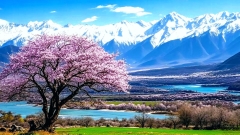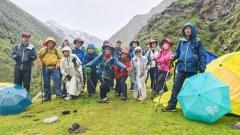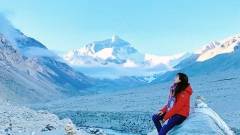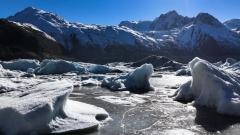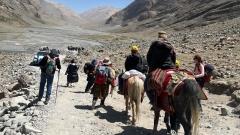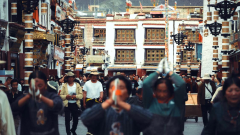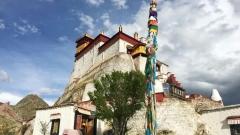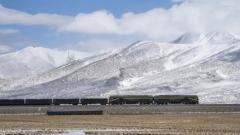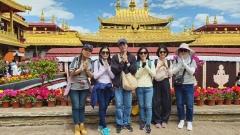Tibet, the mystical land perched high on the world’s rooftop, is more than just snow-capped peaks and sacred monasteries. Its cities—each with its own unique identity, culture, and charm—offer travelers a deep dive into Tibetan life and spirituality. From the bustling streets of Lhasa to the tranquil beauty of Ngari, here’s a curated list of the top 10 must-visit cities in Tibet, perfect for planning an unforgettable Himalayan adventure.
1.Lhasa (3,650 m) – Spiritual Capital and Heart of Tibetan Culture
As the capital and spiritual heart of Tibet, Lhasa is the cultural nucleus of the region. Known as the “City of Sunshine,” it enjoys over 3,000 hours of sunlight annually. The Potala Palace, once the residence of the Dalai Lama, rises majestically above the skyline, while the Jokhang Temple—the holiest site in Tibetan Buddhism—welcomes pilgrims from every corner of the plateau. The city’s blend of ancient architecture, Tibetan customs, and local cuisine offers a rich introduction to life on the roof of the world.
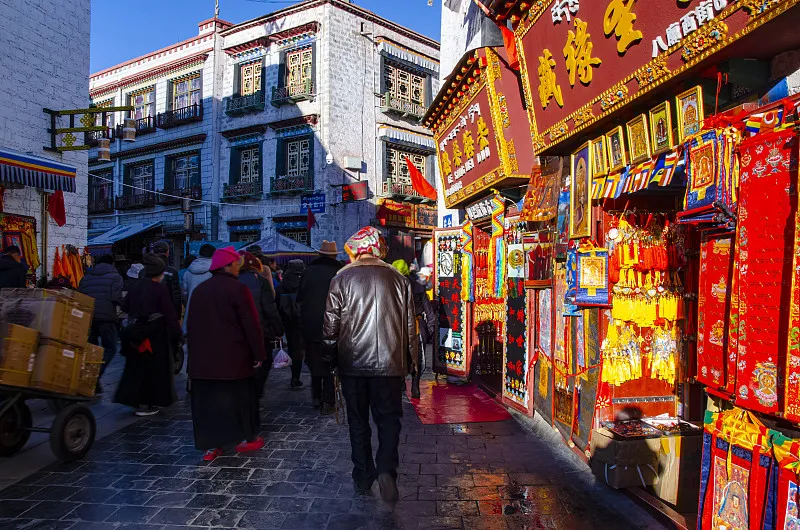
Barkhor Street
Tourists flock to Lhasa not just for its historical landmarks but also for its deeply immersive experiences. Walking the Barkhor Street circuit alongside pilgrims, shopping for prayer beads and handmade crafts, or sipping butter tea in a traditional teahouse are just a few of the ways travelers connect with local life. As a hub for acclimatization and onward travel, Lhasa serves as the gateway to Tibet’s remote wonders.
2.Shigatse (3,836 m) – Home of the Panchen Lama and Himalayan Gateway
Located in the heart of western Tibet, Shigatse is the second-largest city in the region and an important political and religious center. This ancient city was once home to the Panchen Lama, the second most important spiritual figure in Tibetan Buddhism. Tashilhunpo Monastery, a stunning complex founded in 1447, stands as a beacon of faith and history, its golden roofs glinting in the high-altitude sun.
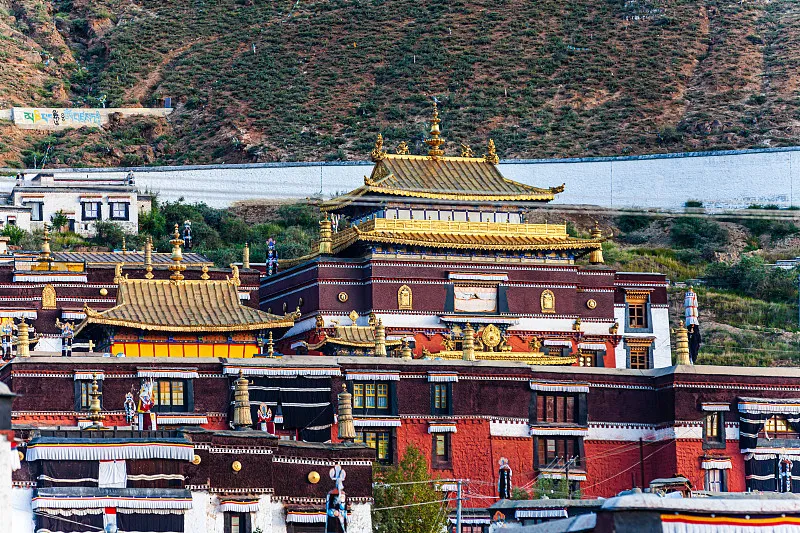
Tashilhunpo Monastery
For visitors, Shigatse offers a rich mix of culture and convenience. It’s often included on overland journeys from Lhasa to Mount Everest Base Camp, offering access to scenic valleys, turquoise lakes, and traditional villages. With its slightly higher altitude, Shigatse is a great place to further acclimatize while enjoying local markets, cultural performances, and scenic drives along the Friendship Highway.
3.Gyantse (4,040 m) – Timeless Town of Ancient Fortresses and Stupas
Gyantse, once an important stop along the ancient trade routes between India and Tibet, retains a timeless atmosphere. Its star attraction is the Gyantse Kumbum, a magnificent multi-tiered chorten (stupa) inside the Pelkor Chode Monastery complex. This architectural gem holds hundreds of murals and chapels and stands as one of the largest and most well-preserved stupas in Tibet.

Sunrise in Gyangze
Travelers are drawn to Gyantse not only for its historical significance but also for its authenticity. Unlike some more modernized cities, Gyantse offers a glimpse into traditional Tibetan life with fewer crowds. The city’s cobbled streets, rustic buildings, and surrounding farmland present an unfiltered view of local life. It’s a photographer’s paradise and a peaceful retreat for history lovers.
4.Tsedang (3,100 m) – Cradle of Tibetan Civilization and Legends
Often referred to as the “cradle of Tibetan civilization,” Tsedang is nestled in the fertile Yarlung Valley. This city is the legendary birthplace of the Tibetan people and home to ancient monasteries like Samye—the first Buddhist monastery in Tibet. With its lush landscape and important cultural heritage, Tsedang serves as a living museum of Tibetan origins.
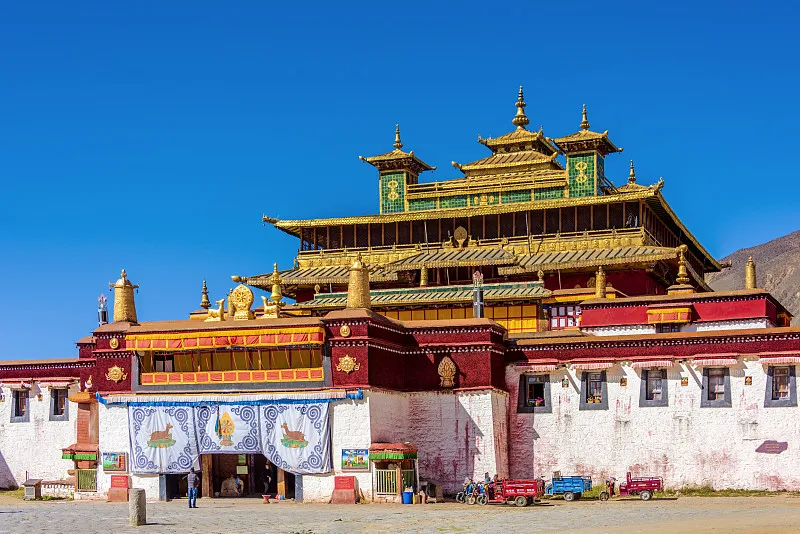
Shannan Samye Temple
Visitors to Tsedang are often captivated by the region’s spiritual depth and natural beauty. Excursions to the Yumbulakang Palace, believed to be the first palace in Tibetan history, are popular, as are serene hikes through nearby valleys. Tsedang provides a more laid-back alternative to Lhasa, ideal for travelers interested in both history and gentle adventure.
5.Nyingchi (3,040 m) – Verdant Paradise in the “Swiss Alps of Tibet”
Nicknamed the “Swiss Alps of Tibet,” Nyingchi offers a stark contrast to the high-altitude desert landscapes often associated with the plateau. With its relatively lower elevation and mild climate, this city features lush forests, deep gorges, and vibrant flora. The area is especially known for the breathtaking beauty of Peach Blossom Valley in springtime.
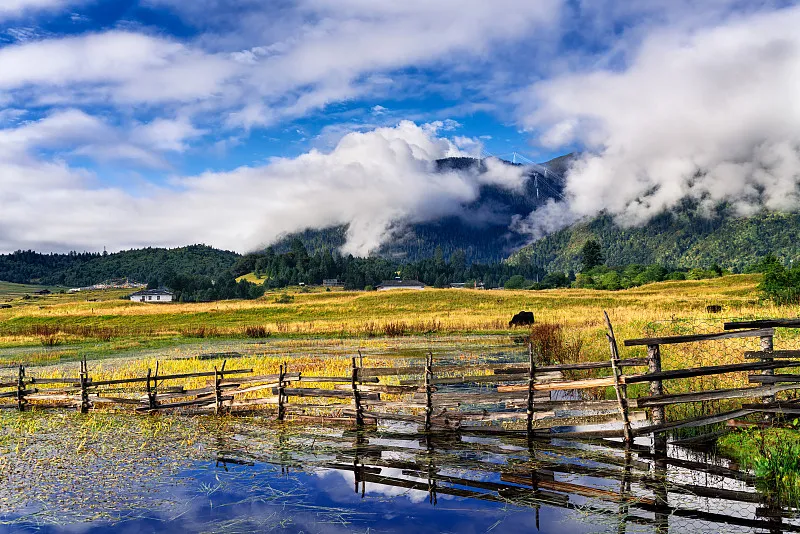
Morning in Lulang, Nyingchi
Nature enthusiasts and photographers find Nyingchi irresistible. From the majestic Namcha Barwa Peak to the sprawling Yarlung Tsangpo Grand Canyon—the deepest in the world—there is no shortage of jaw-dropping views. Nyingchi is perfect for those who seek tranquility, fresh air, and verdant scenery without sacrificing cultural experiences.
6.Ngari (4,500 m) – Sacred Lands of Mount Kailash and Pilgrimage Routes
Remote and rugged, Ngari is often described as the “top of the roof of the world.” Situated in far western Tibet, this region is home to some of the most sacred sites in Tibetan Buddhism, including Mount Kailash and Lake Manasarovar. Due to its extreme altitude and isolation, Ngari remains untouched by modernization, preserving its ancient traditions.
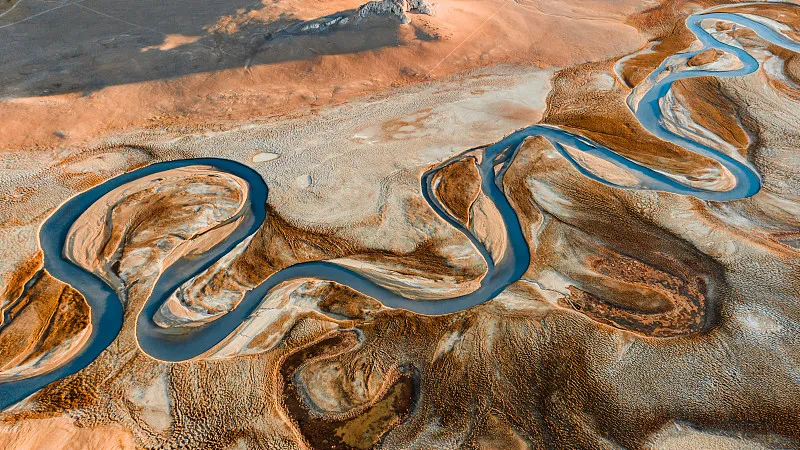
Ngari
Adventurous travelers looking for spiritual pilgrimages or off-the-beaten-path treks are drawn to Ngari’s stark beauty. A circuit around Mount Kailash, known as the Kora, is a life-changing journey for many. With fewer amenities but unparalleled spiritual and natural rewards, Ngari offers the ultimate Tibetan wilderness experience.
7.Chamdo (3,240 m) – Cultural Crossroads of Eastern Tibet
Chamdo, located in eastern Tibet, is a region where Tibetan and Chinese cultures meet. Its rich past as a center of trade and politics is reflected in its vibrant architecture and traditional festivals. The town lies along the ancient Tea Horse Road, and its heritage is deeply tied to commerce and cultural exchange.
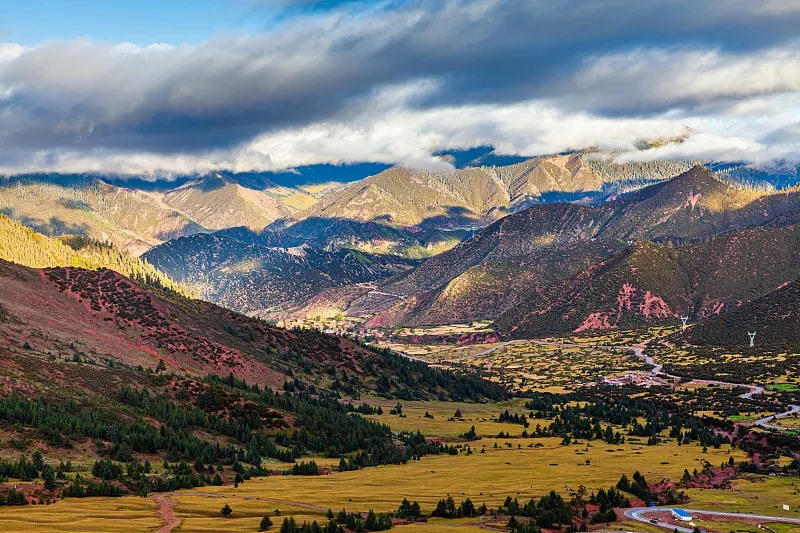
Lawu Mountain, Chamdo
Modern-day visitors to Chamdo can explore dramatic gorges, charming villages, and monasteries that have stood for centuries. With a landscape defined by rivers and mountains, Chamdo offers excellent trekking and cultural immersion. The region’s colorful festivals, such as the Karma Dance and horse racing events, provide a deep dive into authentic Tibetan customs.
8.Nagqu (4,500 m) – Windswept Plains and Nomadic Highland Traditions
Situated in northern Tibet, Nagqu is one of the highest cities on Earth. Its windswept plains and vast grasslands are home to nomadic herders and large yak populations. This city experiences a more extreme climate, with harsh winters and strong winds, but its beauty lies in its untamed nature and raw landscape.
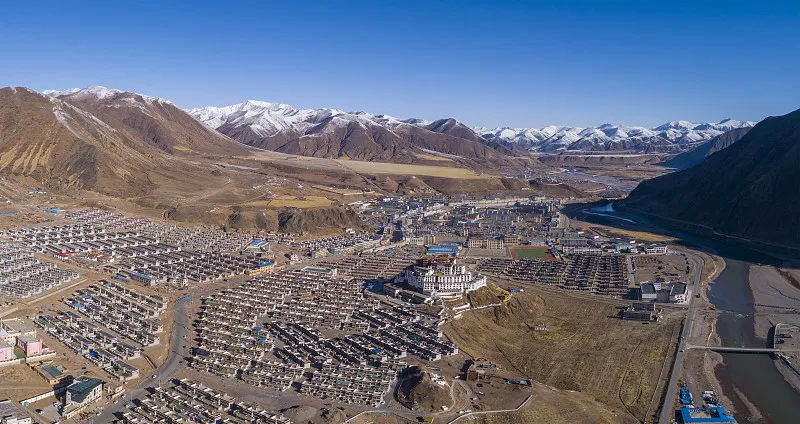
Nagqu, Sog County, Zandan Monastery
For tourists, Nagqu offers a unique chance to witness the nomadic lifestyle of the Tibetan plateau. The annual Nagqu Horse Racing Festival is a major draw, with local herdsmen showcasing their skills in horsemanship, archery, and traditional singing. Travelers seeking authenticity and wide-open spaces will find a rare kind of freedom here.
9.Lhatse (4,050 m) – Peaceful Stopover to Everest and Ancient Monasteries
A small but historically significant town, Lhatse sits along the route between Lhasa and Mount Everest. While it may not boast grand palaces or massive temples, its importance lies in its strategic location and access to nearby attractions, such as Sakya Monastery and natural hot springs.
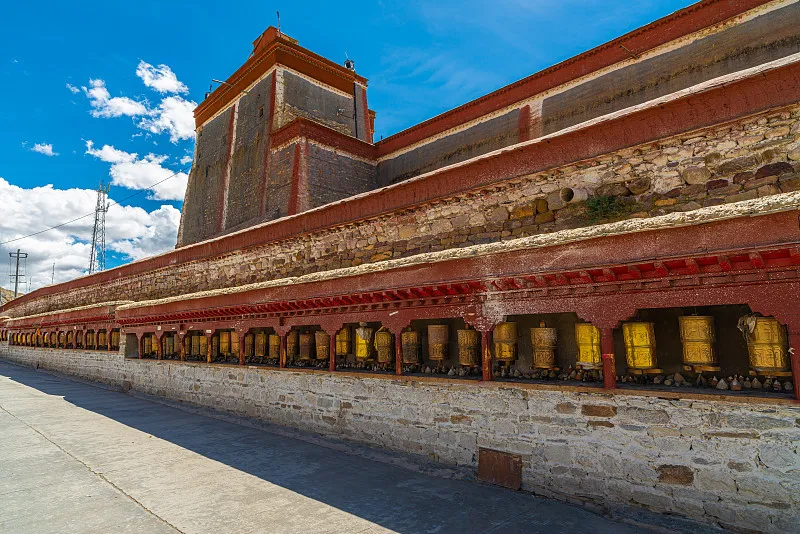
Prayer Corridor of Sakya Monastery
Travelers appreciate Lhatse for its relaxed atmosphere and its function as a comfortable stopover en route to western Tibet. It’s an excellent place to explore lesser-known monasteries and enjoy authentic Tibetan cuisine. Lhatse is a place of quiet charm and is particularly favored by those avoiding the larger tourist hubs.
10.Damxung (4,200 m) – Gateway to Namtso Lake and Nomadic Grasslands
Located to the north of Lhasa, Damxung is most famous for being the gateway to Namtso Lake—one of Tibet’s most sacred and stunning high-altitude lakes. Surrounded by snow-capped mountains and endless grasslands, Damxung itself is a peaceful township with close ties to Tibetan nomadic culture.
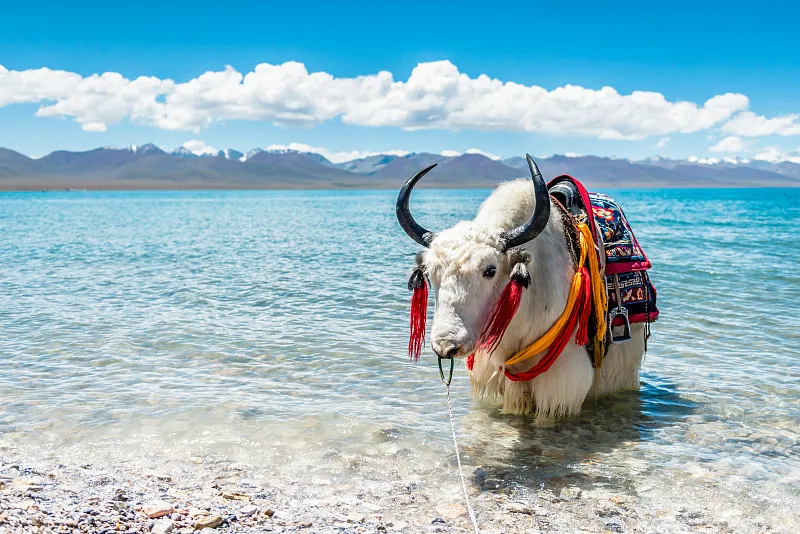
Namtso and Yaks
Tourists often pass through Damxung on their way to Namtso, but many choose to stay overnight to soak in the peaceful vibe and stunning stargazing opportunities. It’s an excellent place to experience local Tibetan hospitality and witness the way of life of yak herders and pastoral communities.
>>Click here to know more travel routes
Conclusion
Exploring Tibet’s diverse cities is like stepping into a living tapestry of history, spirituality, and breathtaking nature. Each destination—whether a bustling religious capital or a tranquil lakeside village—offers a unique experience that deepens your understanding of Tibetan culture and geography. When planning your trip to the roof of the world, these ten cities should be at the top of your itinerary. They promise unforgettable adventures, serene moments, and a heartfelt connection with one of the most spiritually rich regions on Earth.
If you are not sure where to start or have any other questions, you can Contact China Dragon Travel, we will provide you with professional services and rich travel routes.



